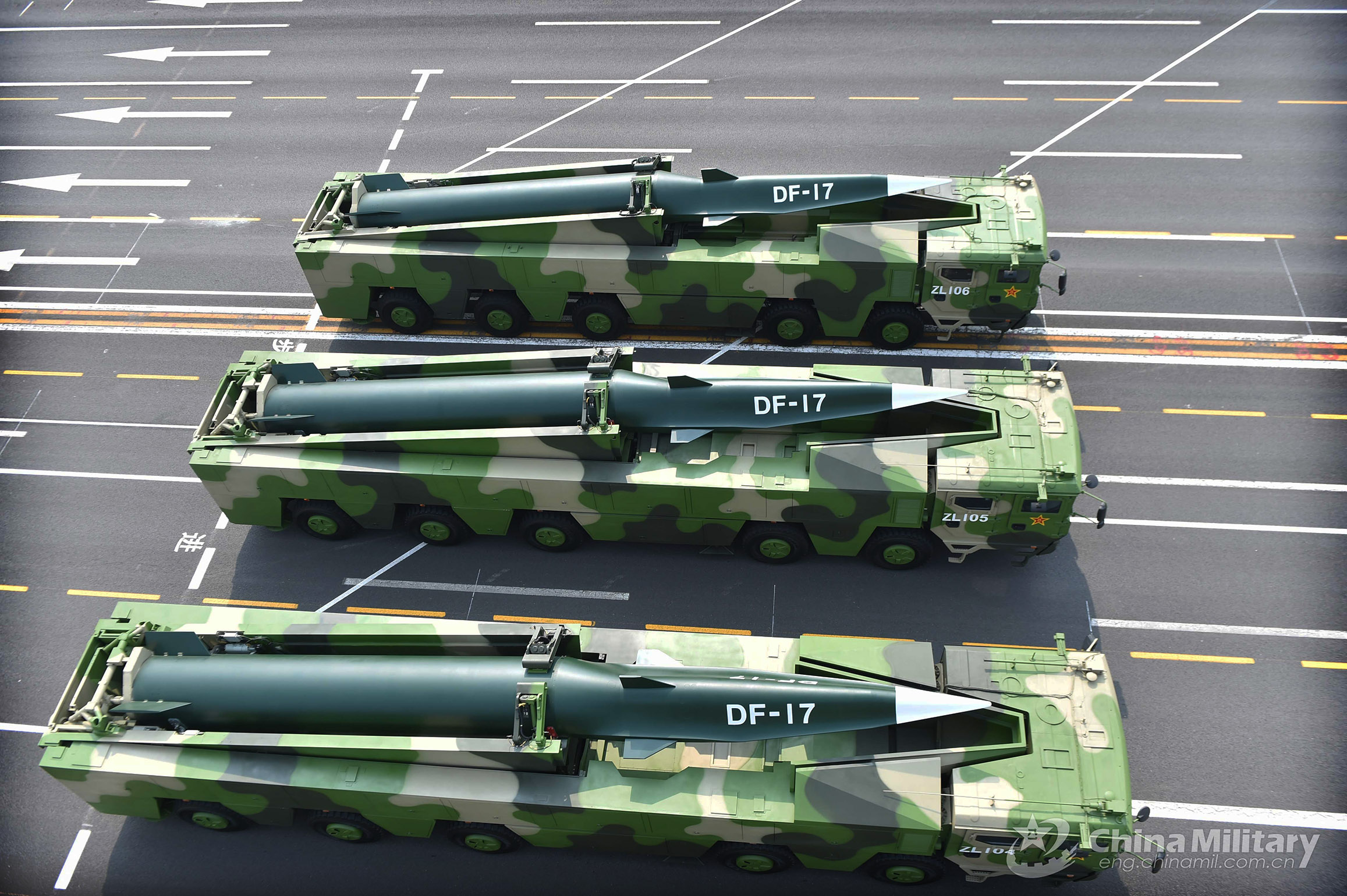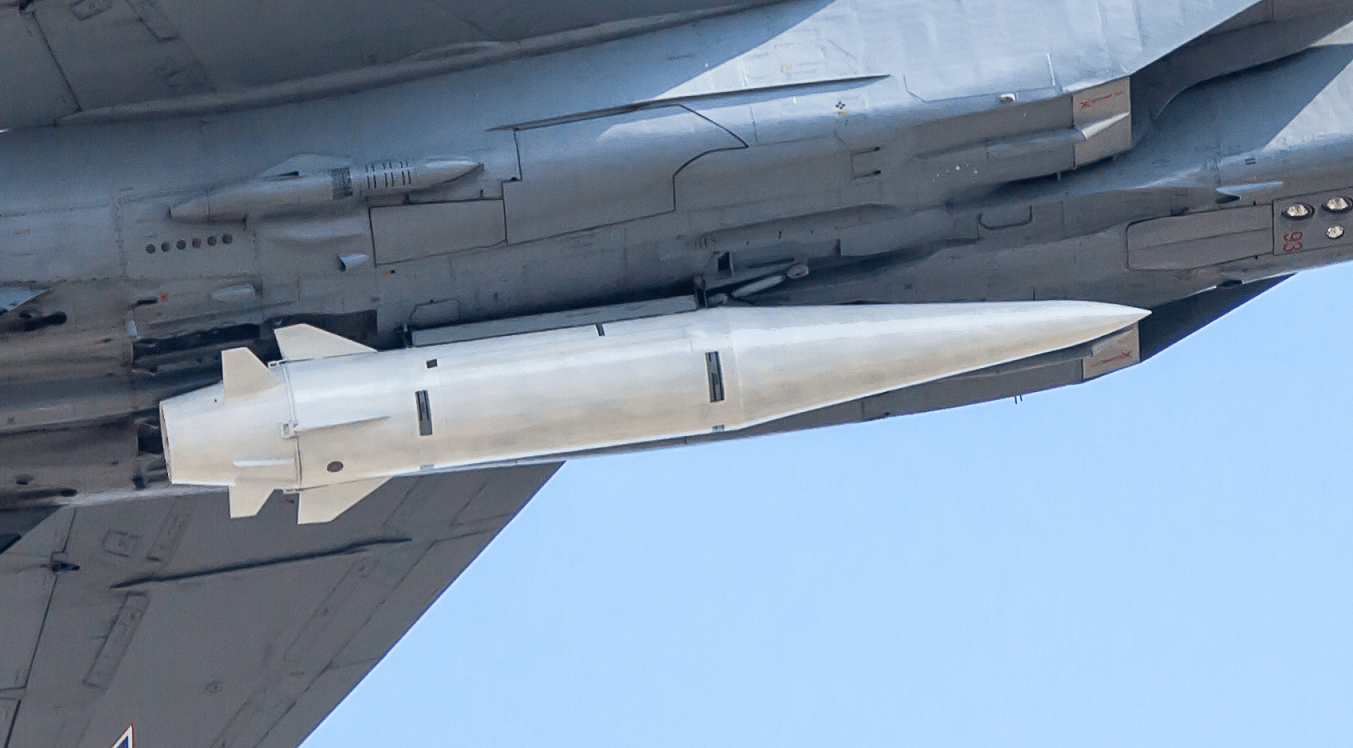Getting China on Board With Hypersonic Controls
In the short time since hypersonic weapons have been deployed, they have proved to be a controversial addition to the arsenals of major world powers. Hypersonic cruise missiles and hypersonic boost-glide vehicles, which are capable of sustained in-atmosphere flight speeds well above Mach 5, introduce a number of complicating variables into the strategic calculus of nations, worrying arms control advocates and leaving defense departments scrambling to procure the systems to avoid losing a competitive edge.
Looking at the characteristics of hypersonic weapons, it is easy to grasp the destabilization and escalation risks they pose. The promptness of a hypersonic strike and its ability to avoid missile defenses calls into question the survivability of nuclear deterrents and thereby the concept of mutually assured destruction. Existing risks associated with warhead ambiguity are intensified when considering the narrow window of time decision makers would have to identify and respond to a hypersonic attack. Despite this, China is vigorously pursuing hypersonics in an effort to counter US asymmetric advantages in nuclear and missile defense systems. Its testing of hypersonic weapons has far outpaced that conducted by Washington, and Beijing’s DF-17 hypersonic glide vehicle has been operational since 2019, with other variants in development or near operational. Meanwhile, the United States’ first hypersonic system, the AGM-183A hypersonic cruise missile, is on a testing schedule that points optimistically to late 2022 as a possible timeline for deployment.
While the U.S. and Russia have participated in bilateral arms control measures such as the New START treaty, which contains provisions for expansion to cover emerging technologies, China has never been interested in arms control and has little appetite to engage with the other powers on hypersonic controls. If a new escalatory arms race is to be avoided, decision makers must bring China on board with controls that eventually limit the proliferation of hypersonic weapons and reduce stockpiles. To do so, it will be necessary to rebuild trust in international agreements and institutions, adopt a flexible arms control mindset, and devise a trilateral framework that facilitates bargaining across asymmetric domains.
Engaging China on this issue is of course easier said than done. The international community has the tricky task of lining up incentives that will stop Beijing stockpiling hypersonic weapons variants. The effort to expand or negotiate agreements to incorporate China and hypersonic weapons is complicated by the fact that the existing arms control framework is already fraying: the termination of the U.S.-Russia Intermediate Range Nuclear Forces Treaty in 2019, uncertainty regarding the continued relevancy of the Treaty on the Non-Proliferation of Nuclear Weapons, and the modernization and expansion of warhead stockpiles in spite of previous nonproliferation efforts all paint a worrisome picture for arms control.
There is also a trust gap and deepening skepticism towards international institutions, which has intensified during the COVID-19 pandemic. For its part, the U.S. weakened its credibility by reneging on international agreements during the Trump Administration, including the Paris Climate Agreement and the Joint Comprehensive Plan of Action (the Iran Deal). U.S. withdrawal from the latter gives China (a firm supporter of the deal) reason to be skeptical of Washington’s commitment to any future arms control agreement, leaving the Biden Administration with an uphill struggle. Moreover, Beijing’s inexperience and inconsistency in negotiating and participating in arms control agreements adds to the difficulties. If the Iran Deal can be salvaged, and the US works in good faith with China and the UN Security Council to enforce and preserve it, Washington could help rebuild confidence in arms control initiatives and foster conditions that are more conducive to getting China on board.
Experts argue that disagreement over the format of arms control agreements and conflict over which countries should participate in them have needlessly hindered progress – a problem that needs to be overcome to have any chance of getting China to the table. In terms of barriers in agreement design, Sarah Kreps demonstrates that some forms of legalization in arms control agreements (such as up-front binding obligations) can be prohibitive, whereas formats that begin with a lower commitment design, including withdrawal mechanisms, can facilitate successful negotiations. She argues that the legalization of enforcement measures should be pursued after the terms of cooperation have been agreed upon. Heather Williams also calls for greater flexibility in the negotiation and implementation of agreements. She contends that parties should be able to periodically adjust their arms control obligations as strategic conditions change. Introducing flexibility into negotiations and agreements will be necessary to enable engagement with China on hypersonic weapons.
The unique challenges posed by hypersonic weapons proliferation – combined with the need to avoid alienating China – limit the scope and feasibility of short-term measures aimed at controlling hypersonic proliferation. Among the challenges is the inability to technically distinguish between hypersonic weapons and other conventional capabilities, which makes it more difficult to control development and testing. China’s asymmetric advantages in hypersonics and disadvantages in other areas also make it difficult to conceive of a plausible arms control agreement that China would buy in to, at least in the short term. Rather than focusing on a ban or disarmament, informal dialogue-based efforts to engage China and Russia should instead work towards non-binding transparency measures that inspire confidence in each country’s nuclear deterrence capabilities.
To start, participants might begin at the track 2 or 1.5 level by sharing information about their stockpiles of hypersonic weapons, devising a system to provide prior notice before tests, make public commitments to use hypersonics only with conventional warheads, and to refrain from using hypersonics to target an opposing country’s nuclear forces. These steps would help to manage the hypersonics arms race in the short term and pave the way for formal arms control measures in the long term.
With dim prospects at present, formal trilateral arms control with China will be possible only when more optimal political conditions arise. If the environment for trilateral engagement on hypersonic missiles emerges, one strategy would be to put multiple technologies on the bargaining table and establish a formula for relating weapons in one domain to those in another. In this way, no country stands to unilaterally lose its “high ground” status in a given capability without sacrifices from other participants. All three countries will have to consider the value they place on specific classes of weapons [e.x. hypersonics, ICBMs, nuclear warheads] in their arsenal and those in a counterpart’s arsenal and then discuss how to build down asymmetrically from there. The formula will have to account for differences in the relative sizes of each country’s stockpile to avoid building down disproportionally.
While short term escalation risks are worrisome, concerns over China’s hypersonic weapons could re-energize interest in arms control and make it possible to reduce global stockpiles of destabilizing and unethical weapons over the longer term. Until then, world leaders and NGOs must pursue good-faith efforts to engage China in strategic dialogue that builds trust and reduces risks while demonstrating to Beijing the mutual benefits of participation in arms control.
About the Author
Chris Gowe is a former research intern at APLN and a recent graduate of American University. His research interests include Korean Peninsula issues and Northeast Asian security.
Disclaimer: The opinions articulated above represent the views of the author(s) and do not necessarily reflect the position of the Asia Pacific Leadership Network or any of its members. The APLN’s website is a source of authoritative research and analysis and serves as a platform for debate and discussion among our senior network members, experts and practitioners, as well as the next generation of policymakers, analysts and advocates. Comments and responses can be emailed to apln@apln.network.
Image: China Military



